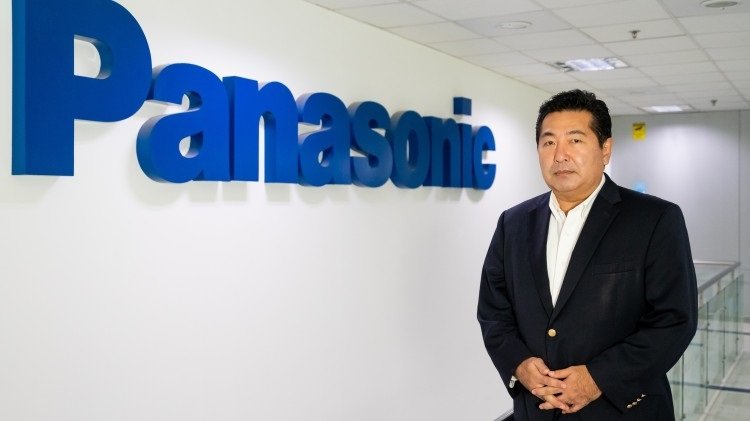Hidetoshi Kaneko – Director & Division Head, System Solutions & Communications Division, Panasonic Marketing Middle East & Africa FZE, talks to Channel Post MEA about the various smart initiatives initiated by Panasonic.

Can you highlight Panasonic’s recent testing on the human acceptance of automatic delivery robots?
The growth of e-commerce and the increase in demand for home delivery services have created a serious shortage of home delivery staff to supply the demand. There is also an urgent need to address the “new normal” that includes contactless interactions. Recognizing this, Fujisawa Sustainable Smart Town in Fujisawa city in Japan and Panasonic began testing a compact, low-speed residential delivery service EV robot in November 2020. The second phase of the test, in which the robot provides a home delivery service to residents in the area, started on March 5th, 2021.
So, in the Middle East, working with smart-city owners is one of the key business strategies that we are promoting in 2021 and for the years to come.
Keeping in mind the recent disruptions, elaborate the changes in customer’s perception towards adoption to digital technology?
Customers highly adopting smart home technologies and autonomy at home an office, responding to this, Panasonic recently launched IoT-enabled “MirAIe” – a Japanese phrase which may be literally translated as “toward the future.” This is the second region after India that is adopting this new IoT platform. The strength of this software is that it is connected to Amazon Echo, Google Assistant and in the fact that we are proposing inhouse solutions varying from security systems, IoT-enabled appliances, lighting switch control, vent fans, air conditioners, air purifiers, solar panels and many other inhouse products that we offer. Altogether it will help the end-users ensure the ultimate comfort, safety and security of their living environment. We expect to add more smart products, by the end of the year, we will have 15 product categories leveraging this new platform.
In Panasonic’s view, how would emerging technologies evolve with the advent of 5G?
5G is revolutionizing every industry in general, but the most important sector it is expected to be implemented is in smart cities ecosystems, where most facilities are connected via IoT. On a grassroots level, the technology will be used by smart home appliances that will operate with little to no human intervention, and in e-healthcare services that will allow healthcare providers to monitor patients through health data. Another smart city application is in Intelligent Transportation Systems (ITS) that includes mobility solutions for people with determination. We are expecting to see much more innovation in this sector in the coming years.
In line with Panasonic’s renewed focus on smart solutions, which of them will spearhead company’s growth in this region?
We are one of the very few companies globally which can supply all the components of these indoor and outdoor solutions from a smart city standpoint. No one brand can do what we can do. We are launching multiple products that are powered with IoT-enabled platform, called “MirAIe” in this region. We have a full roadmap to launch connected air-conditioners with nanoe technologies, smart video intercom and doorbells, smart refrigerators, smart washer and dryer, ventilation fans, ceiling fans and plugs and switches. So, as we expand our business in the GCC region, I will make sure that you start seeing where you can find these IoT-enabled smart apartments powered by Panasonic on our website.
What has Panasonic instore for especially education and healthcare sector in the Post – Covid era?
Panasonic has been a leader in the broadcast industry and in that role, we have been an Olympic sponsor since 1988: many of the cutting-edge broadcasting technologies being used in our remote cameras can be used in a classroom environment. A teacher can conduct their class without having to be conscious of the camera because our cameras can be pre-set for automatic tracking, panning, tilting and zooming for pre-registered teachers. This makes the operations very easy and allows students to participate in a class via either a laptop or mobile device. The software we offer captures all lectures and it makes it easy for students and teachers to send a video clip once the session is over; and the students benefit from the rich functions including word search for any word spoken in a lecture. In the Middle East & African region, we are working with many schools and universities to make remote education more efficient.
With respect to Healthcare, our focus in this region is on robotics. Panasonic has been an early adopter of robotics: already a decade ago, we launched the first generation of what we call “HOSPI”. HOSPI is essentially a robot with AI and autonomous driving capabilities. The robot weighs 170 kg, is 140cm tall, and looks like a walking doll with a cute face. It detects and avoids obstacles while driving to a pre-set destination point, requiring no human interaction. In the Middle Eastern and African region, we have been selling this type of robot to hospitals and we intend to expand the business because we firmly believe this type of robotics will further expand contactless operations which are essential in the hospital environment.
How does Panasonic perceive the growth of EV in the Middle East region, which predominantly is an oil-driven economy?
Panasonic’s long-term partnership with Tesla illustrates our commitment to the future of the EV industry. So far, we’ve produced and shipped over 3 billion cells from our Nevada-based Giga factory, and have invested in a 14th assembly line to increase capacity. We’ve also entered into a joint venture with Toyota last year to produce EV batteries as Toyota shifts from conventional gasoline-based cars to electric vehicles by 2025. We intend to expand this sales channel throughout the industry; meanwhile, we are also focusing on developing a new generation solid-state battery to replace the lithium-ion currently being produced.
Please take us through the Journey of Panasonic as a company over the years and its future roadmap?
Panasonic has vast experience in providing smart-city solutions in various parts of the world: Fujisawa Japan and some parts of the USA, for example, and our plan is to do so in Saudi Arabia, UAE and other countries in this region. We have a full roadmap to launch connected air-conditioners with nanoe technologies, smart video intercom and doorbells, smart refrigerators, smart washer and dryer, ventilation fans, ceiling fans and plugs and switches. By the end of the year, we will have 15 product categories leveraging this new platform. So, as we expand our business in the GCC region, I will make sure that you start seeing where you can find these IoT-enabled smart apartments powered by Panasonic on our website.











